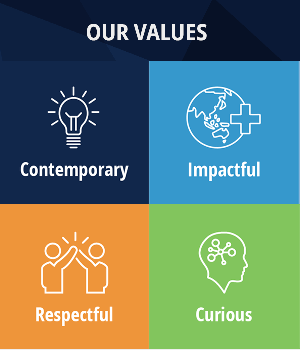Turning an idea into a reliable, low-cost ‘manufacture-friendly’ product is a journey that inventors and innovators need to go on with their eyes wide open. Nigel Cocliff, CEO of Perth-based product development company Idea To Reality (I2R) and product sourcing company Specialised Sourcing, gives his top five tips for success.
Success is often a by-product of careful planning, sound business decisions, patience and an ability to adapt during the course of your particular journey.
1. Rigorous preparation
Without up-to-date market research and business planning, you’re at a disadvantage right from the get-go.
Cocliff says ticking off due diligence items at the very start of the product development life cycle makes you better equipped to make sound commercial decisions.
Things to consider include:
- What’s your point of product differentiation?
- What’s your cost to market?
- How are you going to sell your product?
- What’s your distribution plan?
2. Understand the journey
The process of product development can sometimes be confusing.
“Think about it as a train journey where several stations need to be passed between the start and end points. Typically starting with a concept or idea, a project will pass through such ‘stations’ as prototyping, testing, mass production and distribution before commercialisation,” explains Cocliff.
There will also be major milestones where you need to consider whether it’s viable or not to continue. This is where the value of accurate information and industry knowledge can provide much-needed support to help you make the right decision.
Inventors and innovators also start at different stages of the journey. Some have nothing but a design. Others, like industry-based clients, will often present a complex problem that needs resolving rather than a product in need of commercialisation.
“Some clients will come to us toward the end of the journey, only needing support to find a reliable low-cost, high-quality manufacturing option that respects their IP,” Cocliff says.
3. Ability to compromise
Cocliff says a scoping session is a really important part of the whole process as you may need to be ready to make compromises.
For example, your vision of what a product should look like is not always possible in terms of a product’s functional and technical specifications. So, you may need to change elements to ensure the product remains both possible and commercially viable.
Sometimes, a more organic approach will see the design evolve.
“Once we sit down with the client and scope out the desired functional and technical specifications, we can quickly produce realistic 3D renders to see if the concept sits in line with the customers’ expectations,” Cocliff says.
“I’ve heard of cases where people spend upward of $50,000 to get to an endpoint that has no commercial merit – whereas it should have been either changed or discarded in terms of a design direction at the first or second meeting.”
4. Know when to bail out
Once a concept has been agreed to, Cocliff recommends getting an indicative cost to manufacture before progressing further along the journey.
“This is often the first major decision milestone for a client. Simply put, if you can’t manufacture that product at a price that allows you to make a profit, then you have a red light. Don’t progress any further and build a prototype. Don’t waste your money.
“If you’ve got a green light, you can go onto building a prototype, testing, refinement of design, and finalise your pricing. Once you’ve got final pricing and your product is fit for purpose, it’s then up to the client whether or not they wish to move to the point of commercialisation.”
5. Balance quality and price
When it comes to manufacturing, there is still a general perception that China is the best and only option worth considering.
While this may be the case for certain products, the battle for your manufacturing dollar has become increasingly aggressive. So, a number of factors should be considered before making a decision. Raw material availability and control, build quality, testing and certification standards, IP protection and even the impact of an increasingly volatile global currency exchange environment all play a role.
“Choose your supply partner wisely as a mistake can often be terminal,” Cocliff says.
“It’s also important to ensure your intended place of manufacture is considered during the engineering and modelling stage. There is little value testing a design or certifying a product using materials that are unavailable or cost prohibitive to procure in the supplier’s country. CCI’s International Trade and Investment Centre has experts available to discuss options for looking overseas.
“Attention to all of this detail is why we recommend our clients take time to consider all aspects of a project carefully and thoroughly before rushing ahead in the hope that success awaits the brave.”












